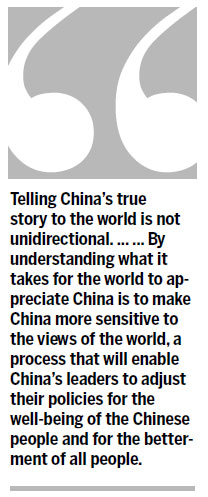Conveying China's true story

For almost 25 years I've been going to China and working to facilitate communication between China and the world. With my long-time business partner, Adam Zhu, I began to tell China's story as a matter of frustration, when, during the mid-1990s as the country was changing, most Westerners still imagined China as the commune-like monolith of the 1950s and 1960s. Telling the true story of China has always been important. Today it is essential.
It was the financial crisis of 2008-09 that catalyzed enhanced realization by China's leaders that in order to protect the country, they had to augment engagement with the world. China's integration into the global economy meant that the country could no longer retreat behind its borders. Fundamentals had shifted. China's image affects the sales of its products and the support of its policies (for example, outbound mergers and & acquisitions).
The first principle of effective communication is that your audience must be listening. You may have relevant, informative, even compelling, material, but if the other side is not paying attention, you will make no impact.















